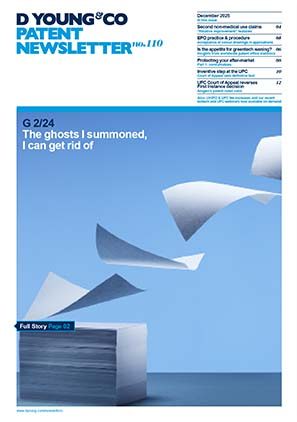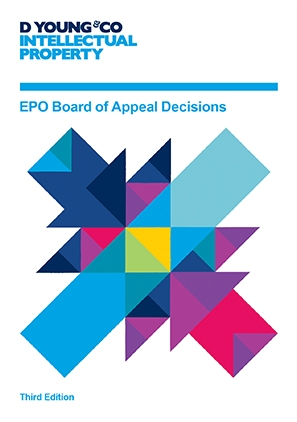Patentability of computer simulations concerning clean energy and energy management solutions
Rising energy prices and a global climate crisis have led to an ever-increasing demand for lower cost clean energy solutions (such as solar energy, wind energy, tidal energy or the like). As a consequence, home energy storage solutions have become more widespread as they enable consumers to capitalise on lower energy tariffs whilst addressing problems related to the inherent supply variability of some forms of clean energy (for example, solar energy). For example, home energy storage solutions enable a consumer to store excess energy when it is produced (such as by solar panels during the day) for use at a later time (for example, at night). Alternatively, a consumer can sell surplus energy back to the electricity transmission network at times of peak network demand.
However, clean energy sources and independent energy storage solutions can further complicate control of electricity transmission networks. That is, control of a transmission network in which a large number of independent clean energy sources and storage solutions are integrated with conventional energy sources (such as power stations) can become very complex. Computer simulations can be used in order to identify potential shortfalls in energy supply before they occur and to predict the levelised cost of energy in the transmission network. Indeed, simulations enable an optimal configuration of available energy sources and energy storage solutions to be determined in order to reduce the overall cost of supplying electricity. Therefore, computer simulations can reduce the complexity of control of an electrical transmission network and other types of energy management solutions.
With investment in clean energy solutions on the rise, an interesting question arises how patents can be used in order to protect innovation in energy management solutions and, in particular, the complex simulations underpinning these solutions.
In this article we review the legal position of patenting simulations at the European Patent Office (EPO) and consider how this can be applied to energy management solutions.
Computer simulations
In order for a computer-implemented method such as a computer-implemented simulation to be patentable, it must be new, involve an inventive step and be susceptible of industrial application. Of these requirements, it is often inventive step which is most difficult to demonstrate for a computer-implemented simulation.
The decision G1/19 issued by the Enlarged Board of Appeal of the EPO clarified that computer-implemented methods of simulating, designing or modelling should be examined for inventive step according to the same criteria as any other computer-implemented inventions (that is, using the COMVIK approach).
In the COMVIK approach the differences between the subject matter of the claim and the closest prior art are identified. If the differences do not make any technical contribution, an objection of lack of inventive step under Article 56 EPC is raised. However, if the differences do make a technical contribution over the closest prior art, the inventiveness of these features is assessed through the well-established problem-solution framework.
Therefore, in the COMVIK approach (which, following G 1/19, should be applied to computer-implemented simulations) all those features which contribute to producing a technical effect serving a technical purpose contribute to the technical character of the invention and should be considered during the assessment of inventive step.
In G 1/19 the Enlarged Board of Appeal noted that it was necessary to leave the definition of what constitutes a technical feature open, in order that such a definition could be extended to accommodate new scientific developments (see, for example, G 1/19, point 77). Therefore, it remains difficult to explicitly define which features of a computer-implemented simulation will be considered in an assessment of inventive step. However, the Enlarged Board of Appeal held that, for establishing the presence of a technical effect, it is not sufficient that the simulation is based on technical principles underlying the simulated system or process. In other words, the fact that a computer-implemented simulation simulates a technical system or process is not decisive in whether the simulation produces a technical effect.
Instead, what is required is that the claimed features produce a further technical effect going beyond the straightforward or unspecified implementation on a standard computer system (G 1/19, points 50 and 51, citing T 1173/97 and G 3/08). This should be assessed on a case-by-case basis (G 1/19, point 141).
In the context of a computer-implemented simulation, the Enlarged Board of Appeal noted that the necessary further technical effects could be obtained in a number of different ways.
First, a computer-implemented simulation comprising features which interact with an external physical reality at the level of their input or output may provide a technical effect related to this interaction. For example, a computer-implemented simulation may provide a technical effect through an input measurement method that calculates or predicts the physical state of an existing real object. This would provide a technical effect which could contribute to the assessment of inventive step. Alternatively, a computer-implemented simulation may provide an output such as a control signal which causes a change in a physical state of an existing real object which would provide a technical effect which could contribute to the assessment of inventive step.
However, according to the Enlarged Board of Appeal in G 1/19, even a computer-implemented simulation without an input or output having a direct link with physical reality (such as a purely numerical simulation) may still provide a technical effect solving a technical problem which can contribute to the assessment of inventive step. For example, the technical contribution of a model or simulation may be that it is specifically adapted to the internal functioning of the computer system or network on which it is implemented (see G 1/19, point 115).
Furthermore, in the case of a numerical simulation, a technical effect may arise from the further use of such data. That is, if the claimed process results in a set of numerical values, it depends on the further use of such data (which can happen as a result of human intervention or automatically within a wider technical process) whether a resulting technical effect can be considered during the assessment of inventive step. It was held by the Enlarged Board of Appeal in G 1/19 that if such further use is not at least implicitly specified in the claim then the further use (and technical effect arising from such further use) will be disregarded from the assessment of inventive step (see point 137, G 1/19).
Accordingly, the decision G 1/19 of the Enlarged Board of Appeal confirms that computer-implemented simulations are patentable at the EPO provided that they satisfy the requirements of novelty, inventive step and industrial applicability. Following the COMVIK approach for computer-implemented methods, only those features which provide a technical effect serving a technical purpose will be considered during the assessment of inventive step.
Application to energy management solutions
As computer-implemented simulations are patentable at the EPO, it is possible to obtain patent protection for innovation in the area of energy management solutions when those solutions are based on simulations. Therefore, a potential applicant should not be discouraged from filing a patent application at the EPO merely because their invention lies in improvements to a computer-implemented simulation.
However, given the complexity of the case law surrounding computer-implemented simulations at the EPO, it is important for an applicant to carefully analyse their solution in order to identify aspects of the simulation which can be linked to the production of a technical effect which can contribute to the assessment of inventive step. The patent application for such an invention should be carefully crafted in order that these aspects are highlighted and explained such that an inventive step can be demonstrated during prosecution of the application at the EPO.
It must be remembered that for the purpose of establishing the presence of a technical effect, it is not sufficient that the simulation is based on technical principles underlying the simulated system or process. Therefore, the mere fact that the simulation is directed to modelling a technical situation, such as the distribution of energy from different sources within a transmission network, may not itself be sufficient to demonstrate a technical effect at the EPO.
Instead, a technical effect produced by the simulation will be required in order that an inventive step can be demonstrated. Where a simulation interacts with the physical state of an existing real object (such as an electricity transmission network) such an interaction may be used to demonstrate the existence of a technical effect. For example, if a simulation results in the generation of a control signal which is used in order to change the way electricity is distributed within an electricity transmission network (by activating or deactivating certain energy sources) it is likely that the simulation will be considered to produce a technical effect which can contribute to an inventive step.
Particular care should be taken when the simulation is a purely numerical simulation which does not involve an interaction with the physical state of an existing real object. In these cases, it should be explained in the application how and why the simulation is adapted for a specific technical implementation (for example, how and why the prediction of levelised cost of energy in a transmission network can be performed with particularly efficient use of storage or computational resources). Alternatively, if the technical effect arises from the future use of the results of the simulation, that future use should be at least implicitly specified by the wording of the claims. For example, this may arise when a numerical simulation is used during the design of a future wind farm to predict the placement of turbine-generator units to meet a certain energy production requirement. If the future use of the results of the simulation is not at least implicitly specified by the wording of the claims in this situation, then it may be very difficult to convince an examiner at the EPO of the presence of an inventive step.
Conclusion
Demand for lower cost clean energy solutions is set to increase in the coming years as governments take further action to address rising energy costs and the global climate crisis. Computer simulations will likely play an important role in the design and control of energy transmission networks incorporating these clean energy solutions. Patent applications for simulations at the EPO must be handled with particular care in order to ensure that the technical effect of the simulation is apparent from the application.


